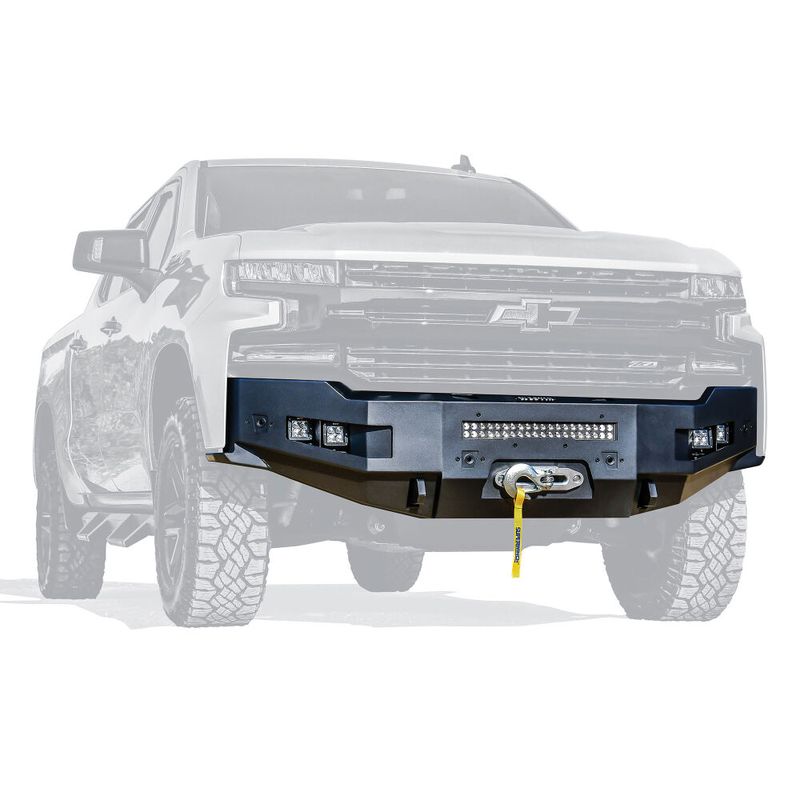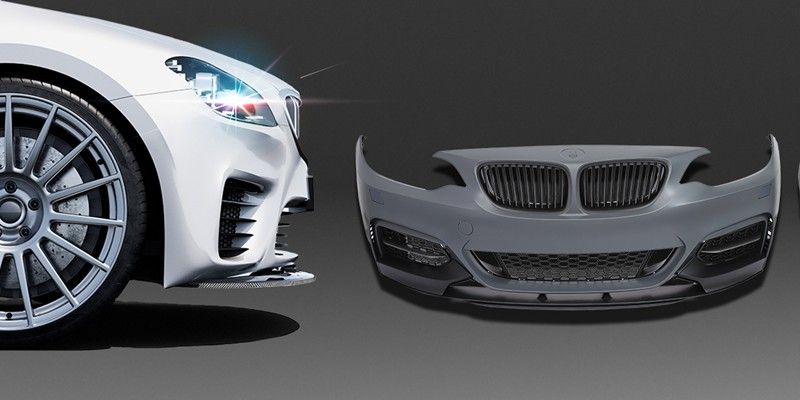What Is Automotive Bumper Assembly Welding?

When thinking of a car's safety, design, and structural strength, airbags or crumple zones always come to mind, but the real hero is the bumper. Behind every strong bumper on the road is a process called automotive bumper assembly welding.
It's the unseen welding underneath the shiny paint and curves that does the heavy lifting when things go wrong. As vehicle manufacturers are in a race to build better products faster, the demand for smarter welding solutions has never been greater.
That's where our car bumper ultrasonic welding & punching equipment comes in, which is designed for high-volume and high-precision automotive plastic welding that keeps the production line moving and standards sky-high. Let's learn what an automotive bumper assembly welding is and how it works.

Table of Contents
What is an Automotive Bumper Assembly Welding?
How is Bumper Assembly Welding Beneficial?
Types of Automotive Bumper Assembly Welding
Challenges in Automotive Assembly Welding
Why Choose Dizo's Car Bumper Ultrasonic Welding and Punching Equipment?
Conclusion
FAQs
What is an Automotive Bumper Assembly Welding?
Automotive bumpers are the safety components of the vehicles, designed to absorb impact energy and protect vehicles against external damage in case of collision and low-speed accidents.
It provides shields to the sensitive components of the vehicles, like the engine, interior trim, transmission, and electrical systems. According to a study, properly welded bumpers can reduce low-speed collision repair costs by up to 30%.

Bumper assembly welding is the process of combining the bumper components by using different welding techniques to manufacture crash-resistant bumpers.
How is Bumper Assembly Welding Beneficial?
The bumper is the first layer of defense that can absorb the impact energy, hence protecting the other components of the vehicle in case of collision. So, effective bumper assembly welding is a significant factor in manufacturing.
It offers many benefits for automotive manufacturers by creating seamless bonds in bumper components and enhancing overall vehicle frame strength. These benefits are the following:
- Bumper assembly welding increases the life span of the vehicle, as properly welded bonds can withstand corrosion and extreme external conditions like temperature or pressure changes.
- It improves safety by providing shields against external forces and reducing passengers' injury risk.
- Moreover, this welding also uplifts the aesthetics and design by giving a smooth finish to the outer frame of the vehicle. It also eliminates the visible seams and bolts and affects the overall appearance.
Types of Automotive Bumper Assembly Welding
There are various types of assembly welding in the automotive industry. Some of these are the following:
Laser Welding
Laser welding is an effective technique in which a high-power laser beam is focused on the material. It is used to fuse the components of vehicles with minimum heat input and deep penetration.
This technique is more efficient for lightweight materials like aluminum or high-strength steel. One limitation of laser welding is that it is quite expensive and limited to only high-volume production, and less feasible for small-scale manufacturers.
MIG Welding
MIG, also known as Gas Metal Arc Welding, is another fast-speed and versatile technique used in the automotive industry for joining metals like aluminum and steel.
It is employed by using a continuous wire electrode and an inert shielding gas to create strong and durable welds. MIG can handle materials of various thicknesses, and it is common in bumpers and auto bodies.
Hot Plate Welding
Hot plate welding is a thermoplastic technique in which the material is melted with a heated metal and then joined to form a strong, leak-proof bond. It creates effective airtight and watertight seals, ensuring reliability and strength.
Moreover, it is capable of joining complex geometrical 3D shapes. Hot plate plastic welding has low operational costs and is ideal for the mass production of vehicles.
Resistance Spot Welding (RSW)
In Resistance Spot Welding, an electrical current is passed through metal sheets at the localized points, which generates heat through resistance. The heat melts metal at certain points, creating strong bonds between the sheets. It is an extremely fast and high-precision welding technique.
Ultrasonic Welding
Ultrasonic plastic welding is a high-frequency welding technique in which ultrasonic vibrations under high pressure are applied to the thermoplastic materials at a frequency of usually 20-40 kHz.
The mechanical energy is then converted into thermal energy at the contact surfaces that melt the parts to be joined. It is a fast speed and efficient method to join plastics or soft metals like aluminum, and copper within seconds without using screws, bolts or adhesives.

Challenges in Automotive Assembly Welding
Automotive manufacturers face many challenges in assembly welding, as not all welding techniques are efficient for every type of material. Some of the most common challenges include:
Material Challenges
Different materials like steel, aluminum, carbon fibre, plastic, metal, and composites require different specialized welding techniques. Similarly, in modern vehicles, sometimes plastic (PP, PC, ABS) is combined with metals (aluminum or steel), which require different methods.
Strength and Weld Safety
Weld strength is another key challenge that the automotive industry faces. Poor temperature, pressure, or air conditions may lead to weak seams. Moreover, thermal distortion also occurs due to excessive or inappropriate amounts of heat. It leads to warped joints or edges of the material.
Production Challenges
Production challenges, cost-effectiveness, and consistent quality control are also key obstacles in assembly welding. Maintaining quality production within limited costs with maximum precision is a big challenge. Welding techniques must be wisely chosen for the desired production scale.
Why Choose Dizo's Car Bumper Ultrasonic Welding and Punching Equipment?
Dizo's Car Bumper Assembly Welding and Punching equipment offers high-quality welding solutions with its advanced features. It is designed specifically for the external automotive components, which balances the durability and safety of vehicles.
The multi-head ultrasonic welding offers adaptable weld positioning and flexible mold modification for different bumper designs.
The equipment's accuracy minimizes the errors and maximizes the repeatability, which saves both time and material. It also reduces the thermal distortion of the material.
Moreover, its integrated ultrasonic punching unit is designed to achieve 0.1 mm precision with smooth R-angle capabilities without damaging the surface finishing and paint quality.
Our equipment uses ultrasonic vibrations to make a robust bond between the components of the bumper and form a unified structure.

One of its key features is that it's environmentally friendly and has low maintenance costs. Car bumper ultrasonic welding and punching equipment at DIZO Global is the best low-maintenance and high-performance equipment for automotive bumper and OEM automotive manufacturers.
Conclusion
In the automotive industry, bumper assembly welding holds significant importance in ensuring the safety, longevity, and aesthetic appeal of vehicles. Automobile manufacturers find it challenging to choose the best welding equipment to produce accurate products at a higher rate.
Dizo's ultrasonic welding system offers fast, innovative, and efficient solutions, addressing the automotive industry's concerns like large-scale production, material diversity, and welding materials of variable geometric shapes.
FAQs
1. Can Dizo Global's equipment perform both welding and punching in a single operation?
Yes! The multi-head ultrasonic equipment can perform both functions, welding components together and punching holes at the same time. This makes bumper production faster and more efficient.
2. How does ultrasonic welding retain the bumper's paint or surface finish?
It uses the heat generated through friction rather than external heat. Thus, it minimizes thermal distortion and retains the paint quality and surface finish, unlike hot-plate or laser welding methods.
3. What happens if the bumper has a complex geometric shape or irregular curves?
The ultrasonic welding equipment's heads can adjust to fit bumpers with complex geometric shapes, curves, or angles. The machine can easily adapt to such bumpers.
4. What kinds of hole shapes or sizes are achievable with ultrasonic punching?
The ultrasonic punching system excels at round as well as custom-shaped holes with diameters as small as 1mm. Extremely complex shapes may need specialized tools.






